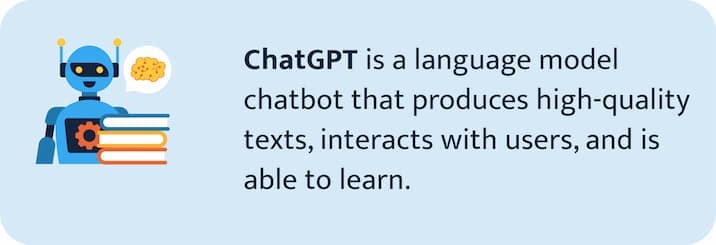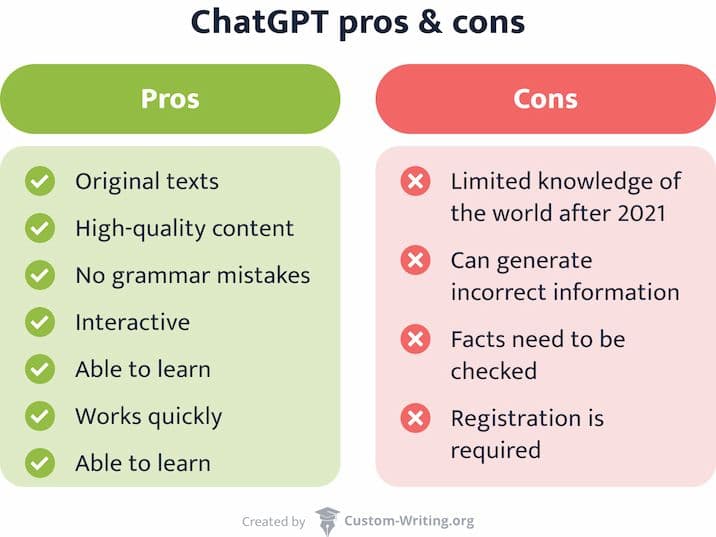AI Essay Checker
Need an AI checker for an essay or research paper? Try the smart tool we’ve made! With it, you’ll easily find ChatGPT-generated fragments in a piece of academic writing.
Interpreting the Results
After you click “Analyze,” the AI essay checker will provide you with you a histogram and a detailed text analysis.
The histogram shows the shares of words depending on how likely an AI writer would utilize them while generating a text on a similar topic. All the words in the text are divided into 4 categories:
- Red – the top 10 words that an AI writer would use to create a text on a given topic; many red words indicate that an essay is likely AI-generated.
- Orange – the top 100 words that a GPT tool would use.
- Green – the top 1000 words that an AI tool would utilize to generate a text on a similar topic.
- Violet – the least predictable words that a GPT writer would almost never use.
You will find a detailed text analysis under the histogram. All the words in it are highlighted according to the above-described groups. You can click on each word to see how likely it is to appear in AI-written texts and check its most common alternatives.
A human-written essay will be highlighted primarily in green, orange, and violet. In contrast, an AI-generated paper will consist of red and orange words.
✅ AI Text Finder: the 4 Benefits
| ⚡ Powerful | Though our AI text finder is by no means perfect, it can find generated text, while plagiarism checkers can’t. |
|---|---|
| 📈 Graphical | The AI essay detector provides a histogram that illustrates the detailed analysis of the text. |
| 👀 Intuitive | The results offered by the Chat GPT finder are easy to interpret; all you need to do is follow the hints. |
| 💰 Free to use | The AI finder is 100% free to use, with no trial versions, hidden payments, or registration required. |
🕵️ AI Essay Checker: How It Works
- Insert your text (up to 4500 characters).
- Add the title or short description (up to 250 characters), optional.
- Click the button.
- Get a detailed analysis of the text for free.
The AI text finder employs the same algorithm used for text generation. I.e., it analyzes the predictability of each next word in a sentence. The more predictable they are, the more likely the text is AI-generated. We, humans, tend to be less predictable in our expressions. We joke and make incoherent conclusions. But meanwhile, we can produce something that has never existed. AI can only generate a combination of phrases and facts from an extensive list of resources (human-written, by the way).
If the AI Essay Checker revealed a high risk of generated content, you might need expert help. A professional essay writing service can deliver a top-quality, custom paper tailored to the requirements of any study level and institution. Our experts will ensure the academic standards are met and will also explain how to get rid of sentences that might be marked as AI-made.
💬 Chat GPT: the Technology behind It
ChatGPT is a novel software product based on GPT (Generative Pre-trained Transformer). It uses natural language processing (NLP) to hold realistic and meaningful conversations with people. But that’s not its only feature.

This AI can generate fictional stories, poems, academic papers, and even computer code.
But most importantly, the chatbot can answer specific queries. For example, you were assigned to explain the difference between liberalism and socialism. You enter the question in the respective field and get a correct (and unique) answer in seconds.
Yes, the instrument provides fast and straightforward answers to any possible questions. But no, you won’t develop critical thinking, problem-solving, and other skills essential for academic and real-life success. That’s why ChatGPT has been banned in many American schools, and its use can undermine your reputation. That’s also why AI generator checkers are being developed very intensively.
Natural Language Processing
A simple explanation: NLP or natural language processing is a way to teach machines to communicate with humans. Please don’t confuse it with the notoriously known neuro-linguistic programming.
A complicated but informative explanation: NLP is an interdisciplinary AI and computer linguistics approach. It tackles the problems software faces during the analysis and synthesis of natural languages (i.e., spoken by people). The method studies voice and text information to generate human-like answers.
NLP applications:
- Speech recognition: The good old speech-to-text. “Which witch switched the Swiss wristwatches?”
- Disambiguation between same words with a different meaning. “Nothing is impossible. But I do nothing every day.”
- Parts of speech differentiation: Where are the subject, object, and predicate? “I’ll google it in Google.”
- Named early recognition (NEM) explains why some people and are called so, not otherwise. “I’ve already told you my mother’s name is Sarah! She hates being called a “mom.”
- Emotion analysis: Irony is priceless but was incomprehensible for machines before NLP. “Light is faster than sound. So, some people may appear bright before they talk.”
- Co-reference resolution: ♫♪ “She’d not been two weeks from shore when down on her a right whale bore.” “She” is the ship, not a girl.
- Natural language generator is the opposite of the good old speech-to-text, as the computer pretends to be human.
GPT & Its Predecessors
Today, GPT is the fastest-growing AI product, but its first developments date back to 2010. It was the time when Natural Language Processing stated using artificial neural networks.
Meanwhile, the mechanism of GPT does not differ much from its predecessors. All of them predicted each next word within a given sentence. But the number of neural network parameters kept growing. Thus, early versions with few parameters were rigid and non-user-friendly. Later releases become more flexible and adjustable.
The recent attention to the software product is so ardent due to the success of GPT.
📑 AI-Generated Essays: Ethical Issues
ChatGPT has raised much concern among researchers, professors, and businesspeople. In particular, they claimed it to be:
- A form of cheating to accelerate homework writing;
- A way to produce a lot of content of questionable quality.

Proponents of the AI tool say that teachers feared that Google could assist students’ cheating. But adaptability is the trait that allowed us to become the most developed creature on Earth. Google revolutionized how we search for information, and AI will revolutionize how we produce and consume content.
But before that happens, you should check your writing in Chat GPT finder.
❓ AI Essay Finder FAQ
A text generated by AI is highly predictable. It uses the most standard and recognizable expressions to make the writing more human-like. In the meantime, such AI speech generators as Chat GPT produce impeccable texts that are not so easily detectable. To do so, you’ll need an online AI generated text finder.
The specific mechanism of text generation varies depending on the tool. But in most cases, you’ll have to enter a question or query and press the button to get an answer. The instrument can also require you to make extra adjustments.
Generating texts with AI can be fine, frowned upon, or illegal, depending on your purposes. In academia, you cannot present a computer-generated text as your own. If detected, AI-generated essays will be construed as plagiarized. They can destroy your reputation as a good college student or scientist.
- Enter the essay you wish to check for AI-generated plagiarism.
- Insert the title for a better result.
- Press the button to get a free result.
- If you wrote the text, but it is still too AI-like, edit it appropriately.
Updated: